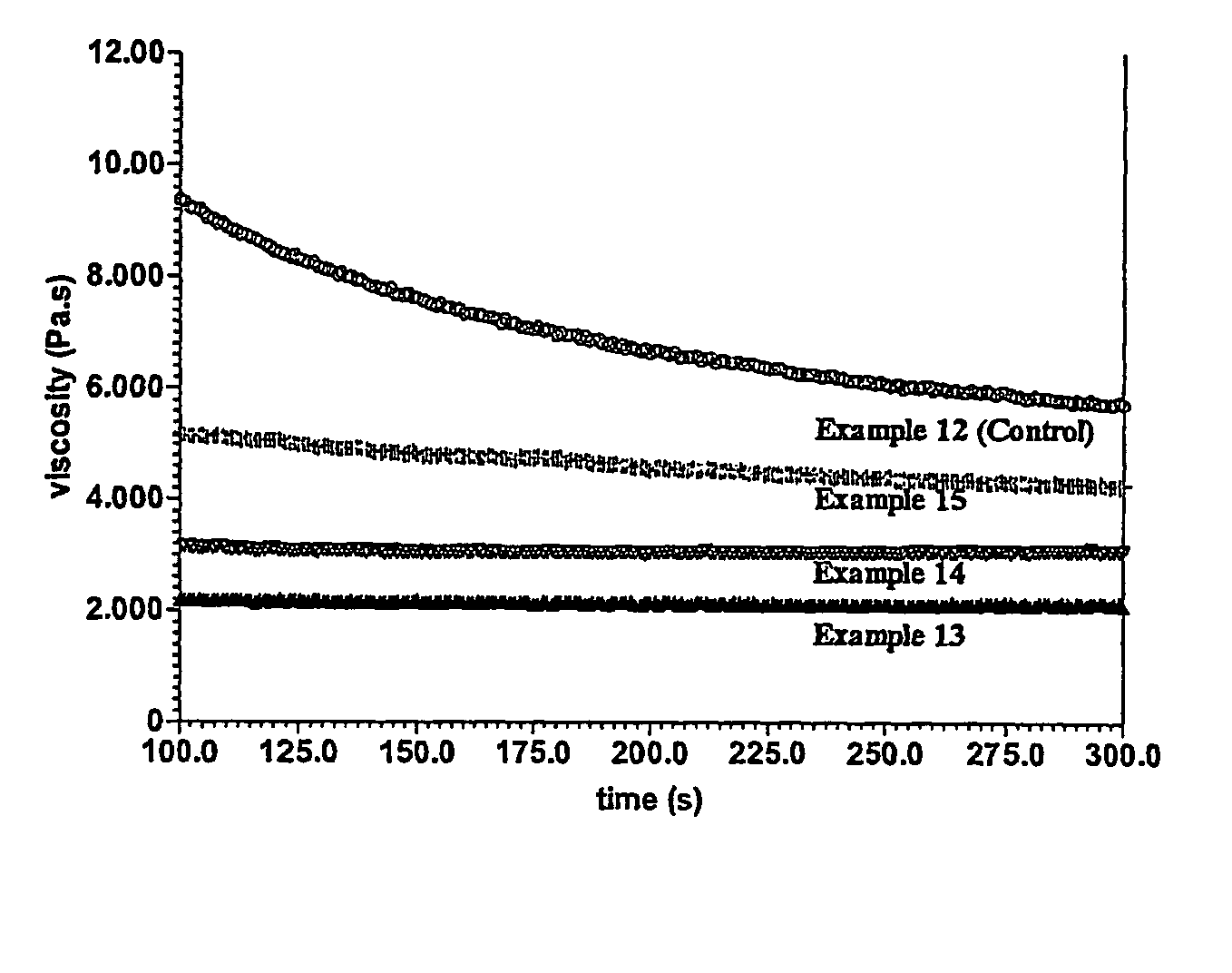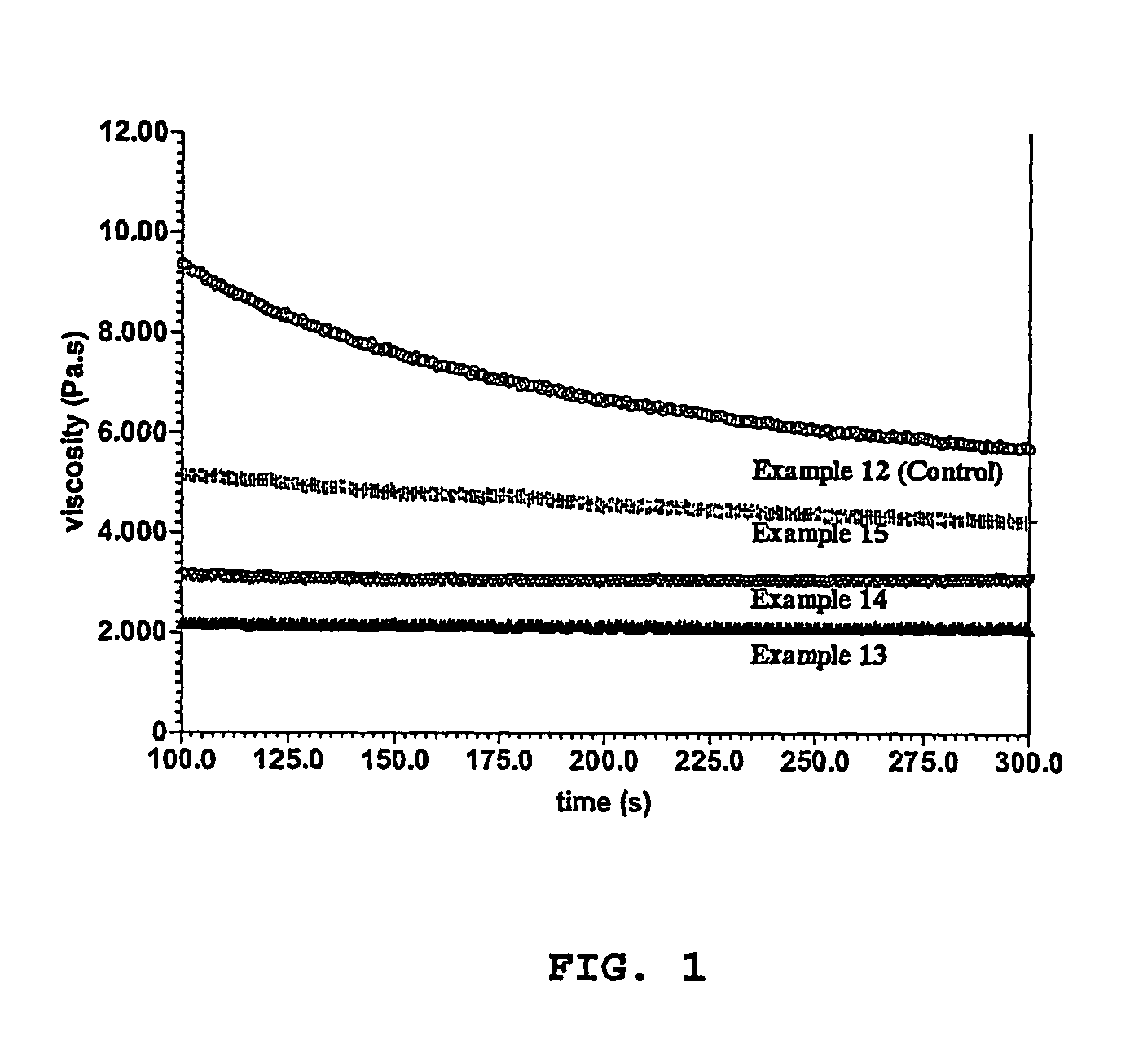Soap bar compositions comprising alpha sulfonated fatty acid alkyl estersand polyhydridic alcohols and process for producing same
- Summary
- Abstract
- Description
- Claims
- Application Information
AI Technical Summary
Benefits of technology
Problems solved by technology
Method used
Image
Examples
examples
Procedure for Making Soap / SME (Sulfonated Methyl Ester) Combars
[0246] One procedure for making soap / SME combars is as follows: [0247] (1) Neat soap is melted in a steam jacketed crutcher (18-200° F.) [0248] (2) alpha sulfomethyl ester, as a dried paste or an aqueous solution, is added to the crutcher with stirring, and agitation contained for 5 minutes [0249] (3) Additives to reduce tackiness, such as glycerine or sodium chloride (0.1 to 2.0%) can be introduced into the crutcher at this point and stirring continued for another 2 minutes. [0250] (4) The wet soap is air-dried or vacuum-dried to reduce the moisture level to below 5%. [0251] (5) To milled soap chips, perfume, titanium dioxide and other minor additives are added and milled again (this time with the crimper plate in position) [0252] (6) The soap mix is processed through a Beck plodder (Stephan Beck Plodder Co). The temperature of the plodder is maintained at 90-100° F. using a water circulation system [0253] (7) Bars are...
example # 1
Example #1
Monosalt Sulfonated Methyl Ester (SME) MC-48 Preparation
[0254] MC-48 as defined above is commercially available from a variety of sources. Its method of manufacture is well known to those skilled in the art.
example # 2
Example #2
Disalt Sulfonated Fatty Acid (SFA) Preparation
[0255] Approximately 3500 grams of MC-48 acid is placed in a 4 L beaker and with rapid agitation, approximately 330 grams of sodium hydroxide is added slowly. Upon complete addition of the sodium hydroxide, the resulting SFA material had a thick, pasty consistency. The crude SFA is re-crystallized by washing with methanol, water and salting out the purified SFA product. The crude SFA is analyzed by titrating the material with 0.02N hyamine, which indicated that approximately 46.6% disodium salt of MC-48 is present. The recrystallized SFA product is approximately 99.8% disodium salt of MC-48.
PUM
| Property | Measurement | Unit |
|---|---|---|
| Temperature | aaaaa | aaaaa |
| Temperature | aaaaa | aaaaa |
| Temperature | aaaaa | aaaaa |
Abstract
Description
Claims
Application Information
 Login to View More
Login to View More - R&D
- Intellectual Property
- Life Sciences
- Materials
- Tech Scout
- Unparalleled Data Quality
- Higher Quality Content
- 60% Fewer Hallucinations
Browse by: Latest US Patents, China's latest patents, Technical Efficacy Thesaurus, Application Domain, Technology Topic, Popular Technical Reports.
© 2025 PatSnap. All rights reserved.Legal|Privacy policy|Modern Slavery Act Transparency Statement|Sitemap|About US| Contact US: help@patsnap.com



